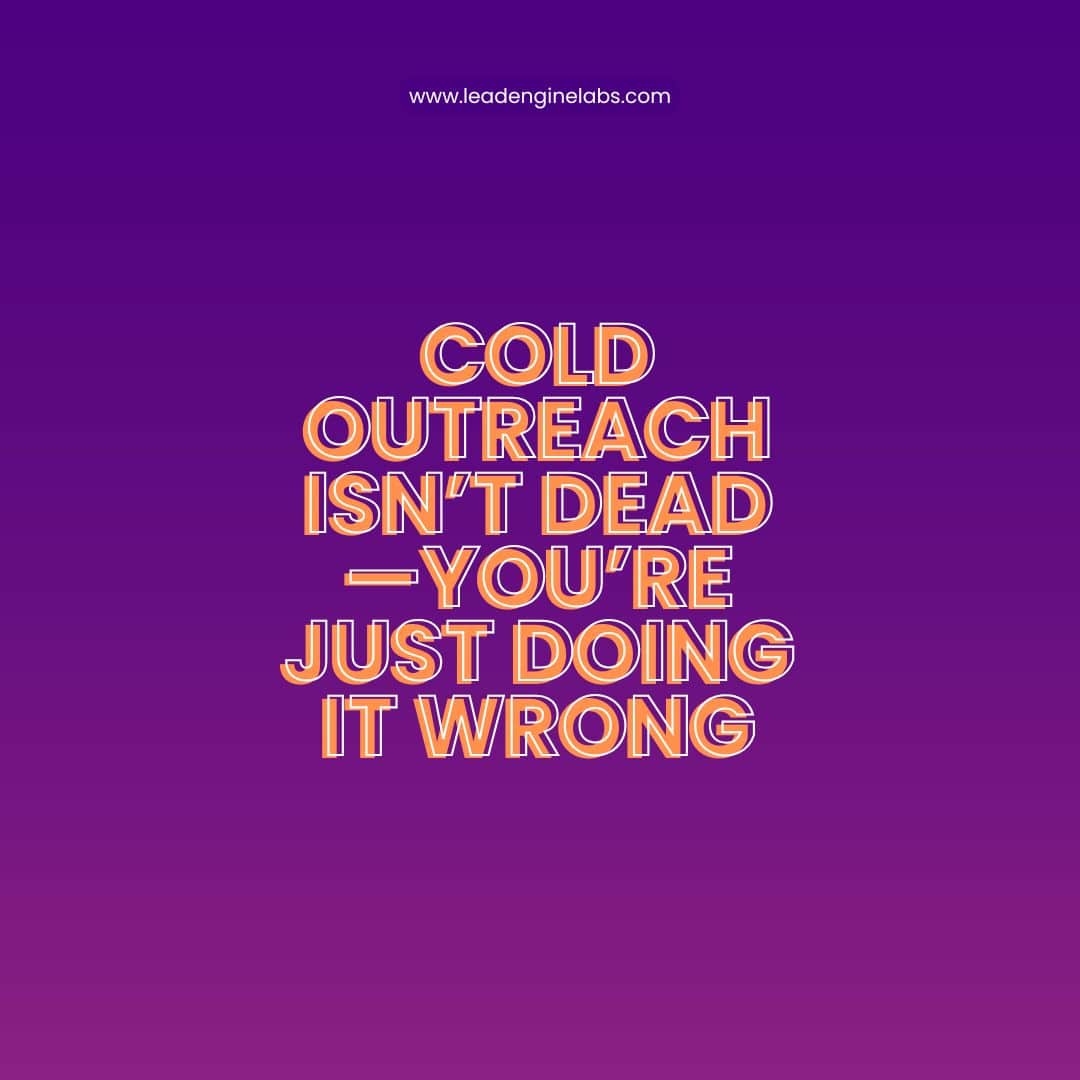The narrative that cold outreach is dead is lazy. The truth? Cold outreach isn’t dead—bad cold outreach is.
Spray-and-pray templates. Zero research. Cringe-worthy subject lines. These are what killed most people’s results—not the channel itself.
But if done right, cold outreach still drives pipeline. It just looks different now. It’s personalized. Targeted. Timed. Strategic. And it works.
In this post, we’ll unpack why most cold outreach fails, and how to build an outbound system that gets real replies, real conversations, and real deals.
Demand Generation: How B2B Brands Can Build Demand Instead of Just Capturing It
Why Most Cold Outreach Fails
It’s not because email is dead. Or because people don’t open messages. It’s because the approach is broken.
The Common Mistakes:
1. Mass Blasts Disguised as “Personal” People can sniff out a template from the first sentence. When 1,000 people get the same message, no one replies.
2. No Relevance You mention the company name in the first line, but the rest of the message could’ve gone to anyone.
3. Weak Offers “Would love to connect and learn more about your business” is not an offer. It’s a waste of space.
4. Bad Timing You reach out too early in the buyer’s journey, or too late when they’ve already made a decision. No context = no results.
What Cold Outreach Looks Like Now (And Why It Still Works)
Modern cold outreach is about relevance at scale. You don’t need to handcraft every message—but you do need to make it feel like you did.
The playbook today:
- Short, relevant messages
- Trigger-based timing
- Smart list building
- Offers that don’t suck
When you get those right, cold still cuts through the noise.
Step 1: Build a High-Signal Target List
The outreach game starts before the first message. If you’re messaging the wrong people, even the best copy won’t save you.
How to fix your targeting:
- Firmographics: Industry, size, revenue, tech stack
- Triggers: Hiring for sales roles, raising capital, recent funding, job changes, new tech adoption
- Intent Signals: Company visiting your site, engaging on LinkedIn, researching competitors
Tools to help:
- Apollo / Clay for data enrichment
- BuiltWith for tech stack analysis
- 6sense / Bombora for intent data
- Sales Navigator for warm triggers
Build smarter lists, not just longer ones.
Step 2: Create Offers Worth Responding To
Nobody wants another “intro call.” Nobody’s replying to “pick your brain.”
Good outreach starts with a good offer. That could be:
- A clear solution to a problem you know they’re dealing with
- A relevant insight or teardown of their current setup
- A short Loom video explaining how you can help
- An invite to a niche roundtable or private event
Bad outreach: “We help companies like yours do X.” Better outreach: “I noticed [very specific thing]—here’s a fix we implemented for [similar company]. Got 2 mins?”
The goal isn’t to pitch. It’s to earn attention. Then, earn conversation.
Step 3: Nail the First Line
The first line determines whether your message gets read or deleted. And no, “Hope you’re doing well” doesn’t count.
Strong openers:
- “Saw your post about [topic]—totally agree, especially the part about…”
- “Just read [article]—curious how that’s impacted your [specific process]?”
- “Noticed you’re hiring for [role]—are you expanding the [department] team?”
The first sentence needs to prove this isn’t a mass email.
Step 4: Keep It Brutally Simple
Nobody’s reading a wall of text. And nobody wants to decode your clever copy.
Keep cold emails under 4 sentences:
- Line 1: Relevance
- Line 2: Value or insight
- Line 3: Proof or social validation
- Line 4: Soft CTA
Example:
“Noticed you’re hiring SDRs—typically a sign you’re pushing outbound. We just helped [Company] increase reply rates by 27% using a segmentation play I think would work for you. Can I send a quick outline?”
This gives context, relevance, proof, and a reason to respond—all without begging.
Step 5: Don’t Over-Automate
Outreach tools are great—but too many people automate themselves into the spam folder.
If you’re sending 1,000 messages a day with no logic, you’re not doing outbound. You’re just burning domains.
What to do instead:
- Use tools to scale personalization fields (via Clay, Instantly, Smartlead)
- Set caps on sends per day
- Use inbox rotation and warmup tools
- Split tests small batches to see what works
Automation should scale good outreach—not cover for bad strategy.
Step 6: Use Omnichannel Touchpoints
Email still works—but not alone. Layer in other channels for more context, trust, and replies.
Here’s a basic sequence that works:
- Day 1: Email #1
- Day 2: LinkedIn visit
- Day 3: LinkedIn connection request
- Day 5: Email #2
- Day 6: Like a recent LinkedIn post
- Day 7: Email #3 (with a Loom or case study)
- Day 10: Breakup message
You don’t need 17 touchpoints—but you do need to hit where they’re active.
Step 7: Track and Learn Fast
Most teams don’t know why their outreach isn’t working. They just guess.
You should know:
- What open rate = subject lines that work
- What reply rate = messages that land
- Which segments convert best
- Which offers flop
Track everything. Double down on what works. Cut what doesn’t.
Outreach is not about perfect messaging. It’s about iteration.
Conclusion: Cold Outreach Isn’t Dead. It’s Just Smarter Now.
If your cold outreach is falling flat, the channel isn’t the problem—your playbook is.
Fix the targeting. Fix the offer. Keep it human. Keep it tight. And use the tools to scale signal, not noise.
At Lead Engine Labs, we help B2B teams build outbound systems that don’t get ignored. Systems that get replies. Book calls. Close deals.
Need help retooling your cold strategy?
Let’s build one that actually works.

